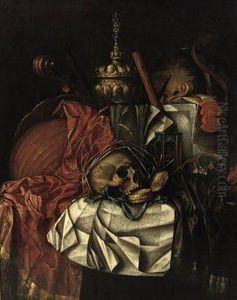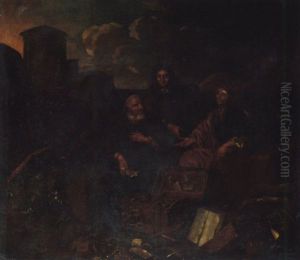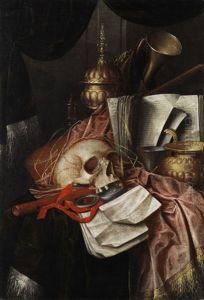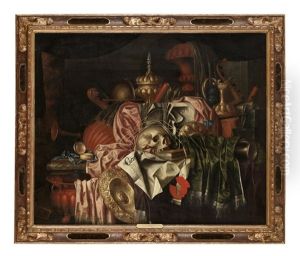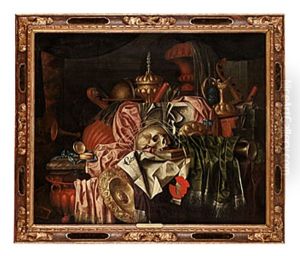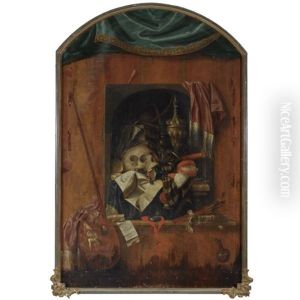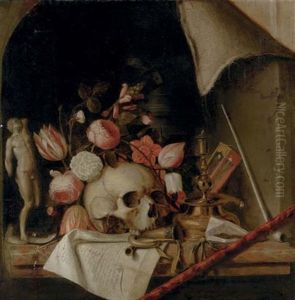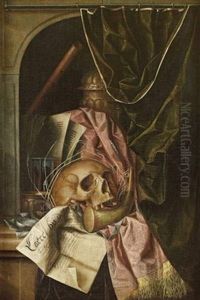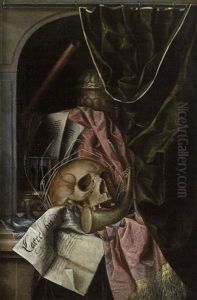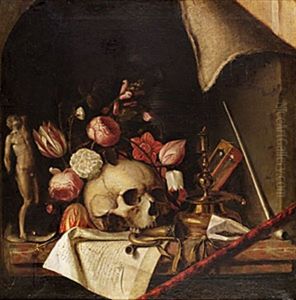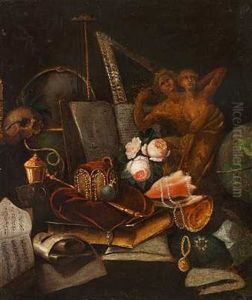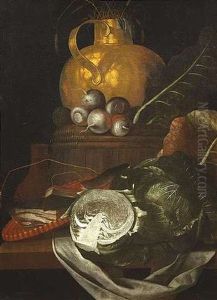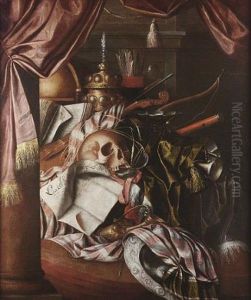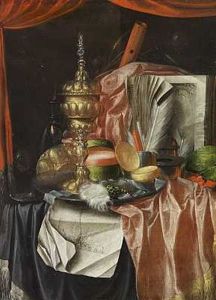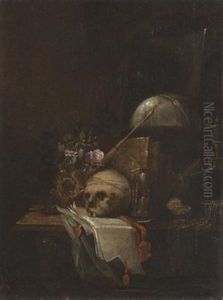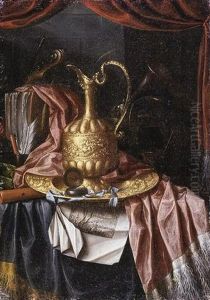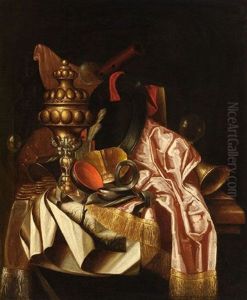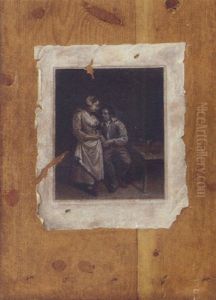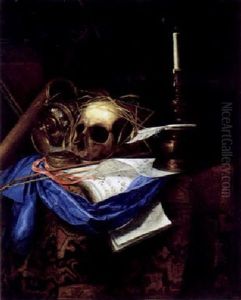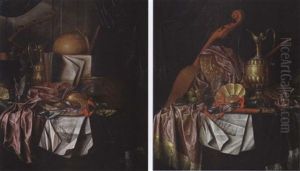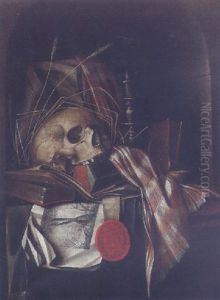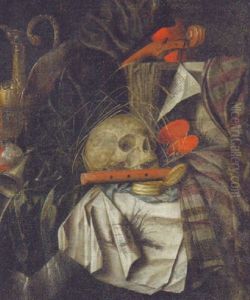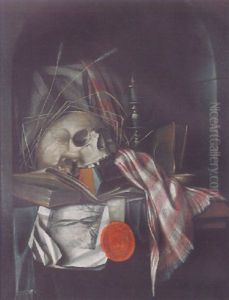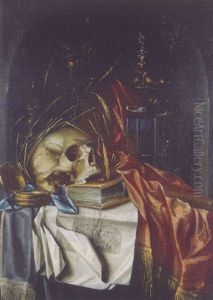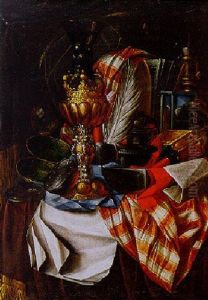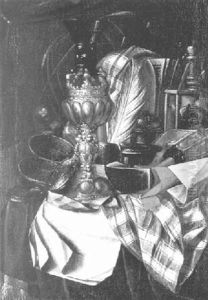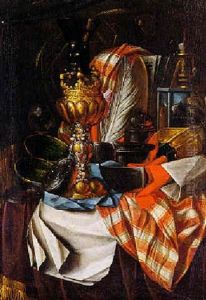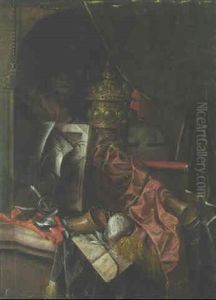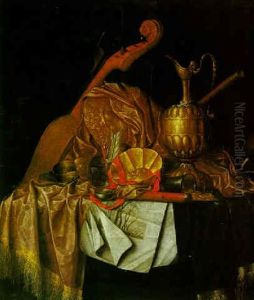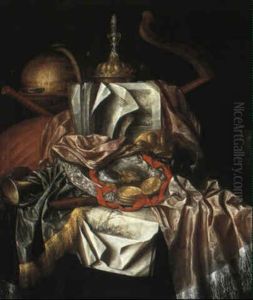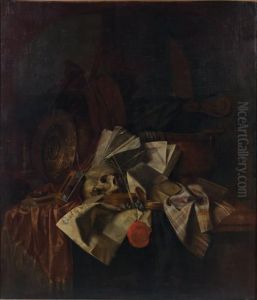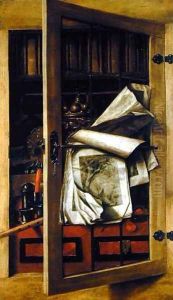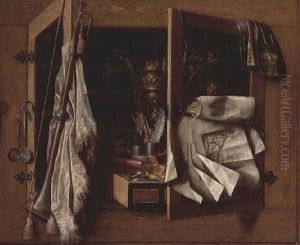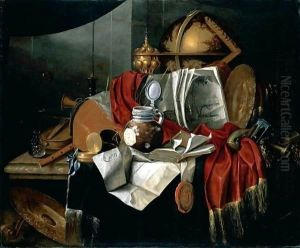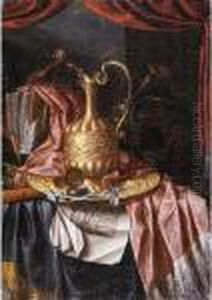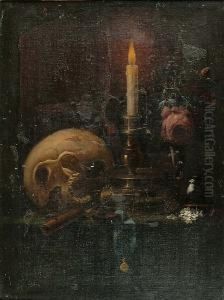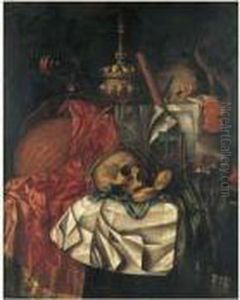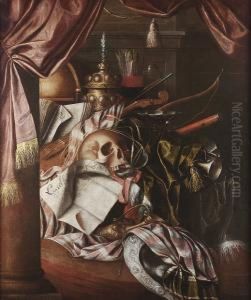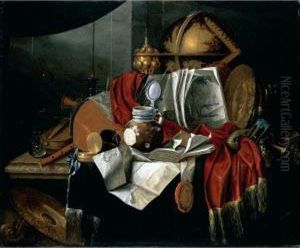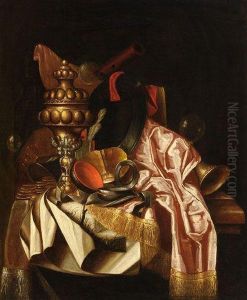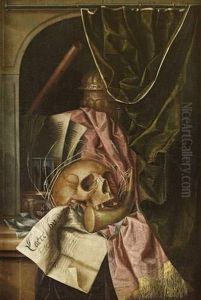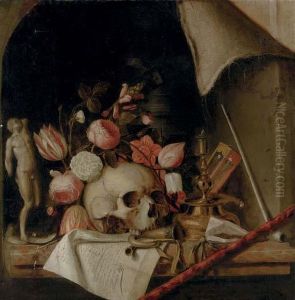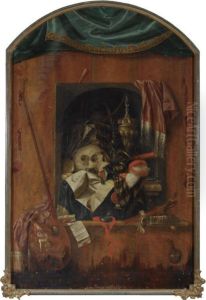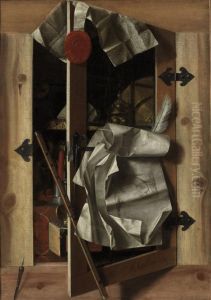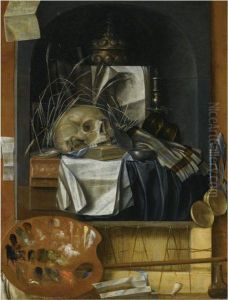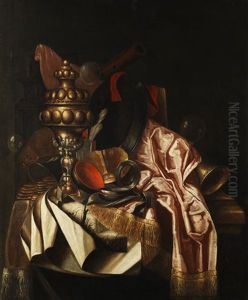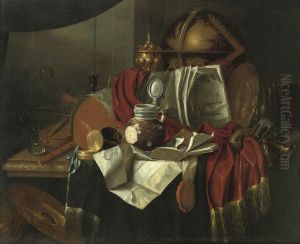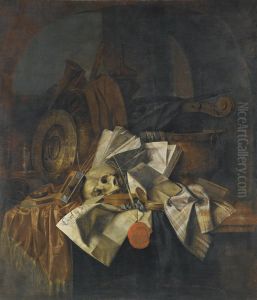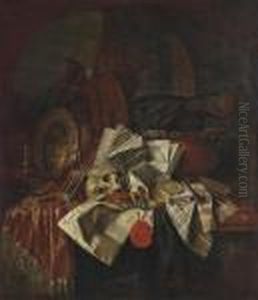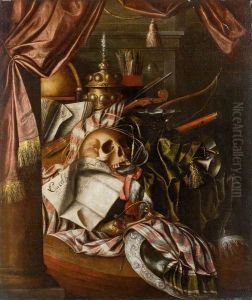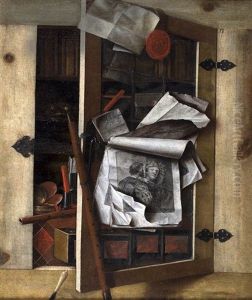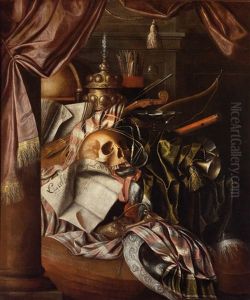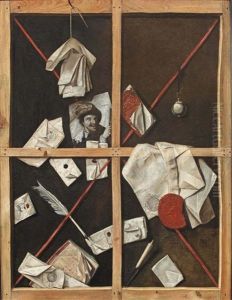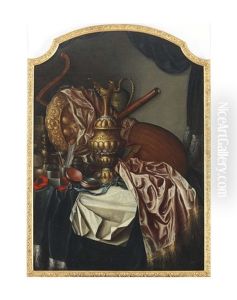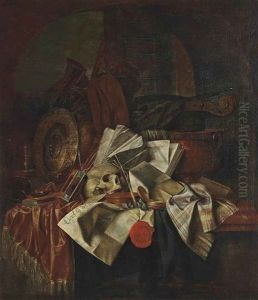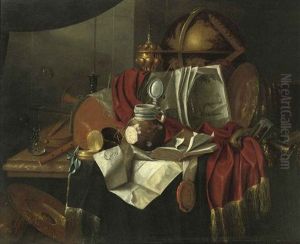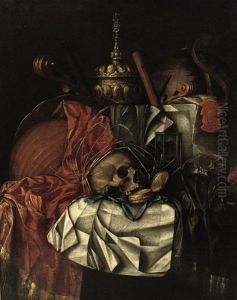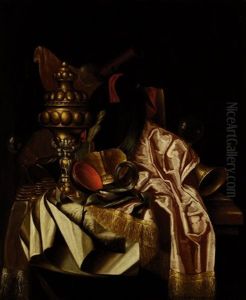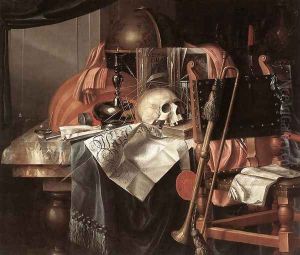Franciscus Gysbrechts Paintings
Franciscus Gysbrechts, also spelled Franciscus Gijsbrechts, was a Flemish Baroque painter who is known for his skillful execution of still life and trompe-l'œil paintings. His exact birth date is not recorded, but he is believed to have been born around 1630, possibly in Antwerp, which was a major center for artists during the period.
Gysbrechts' work is characterized by its meticulous attention to detail and its ability to deceive the viewer's eye into believing that the objects depicted are three-dimensional. His paintings often included subjects such as musical instruments, books, and artist's tools, and he was particularly adept at mimicking the textures of these various materials.
In the mid-17th century, Gysbrechts worked in Copenhagen at the court of King Frederik III of Denmark, where he produced several works for the king's Kunstkammer (Cabinet of Curiosities). These works were meant to amuse and impress viewers with their visual trickery. One of his notable works from this period is 'Trompe-l'œil. The Reverse of a Framed Painting,' which displays a convincing depiction of the back of a canvas, complete with labels and seals, as if the painting itself has been turned around.
Despite his talent and the patronage he received, little is known about Gysbrechts' life, and his work did not gain the same lasting recognition as some of his contemporaries. Documentation of his career after his time in Denmark is scarce, and the exact date and circumstances of his death are unknown. The last known record of him dates to 1675, and it is assumed that he died at some point thereafter.
Gysbrechts' paintings are now seen as fine examples of the trompe-l'œil genre, and they can be found in various museums and art collections around the world. His contributions to the still life genre have been re-evaluated by art historians, and he is now regarded as an important figure in the development of illusionistic painting techniques during the Baroque era.
